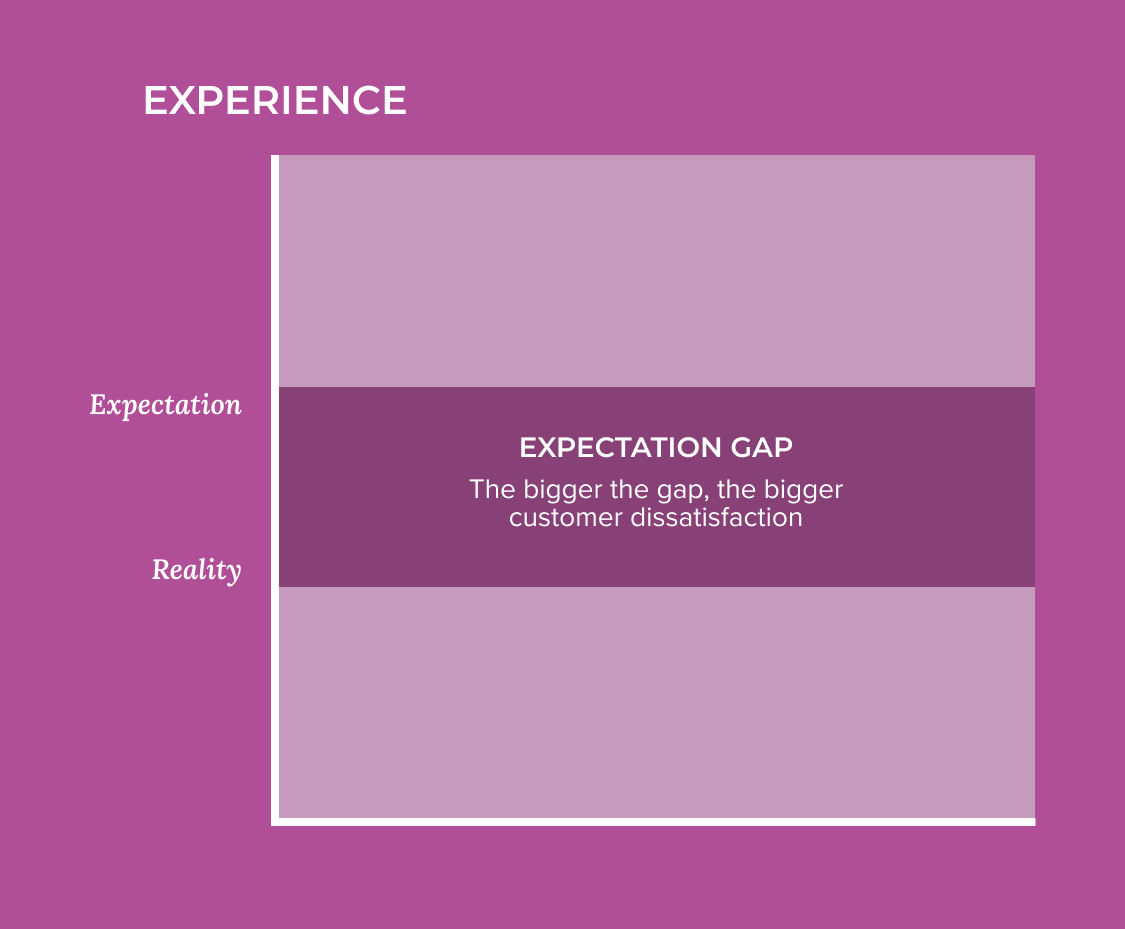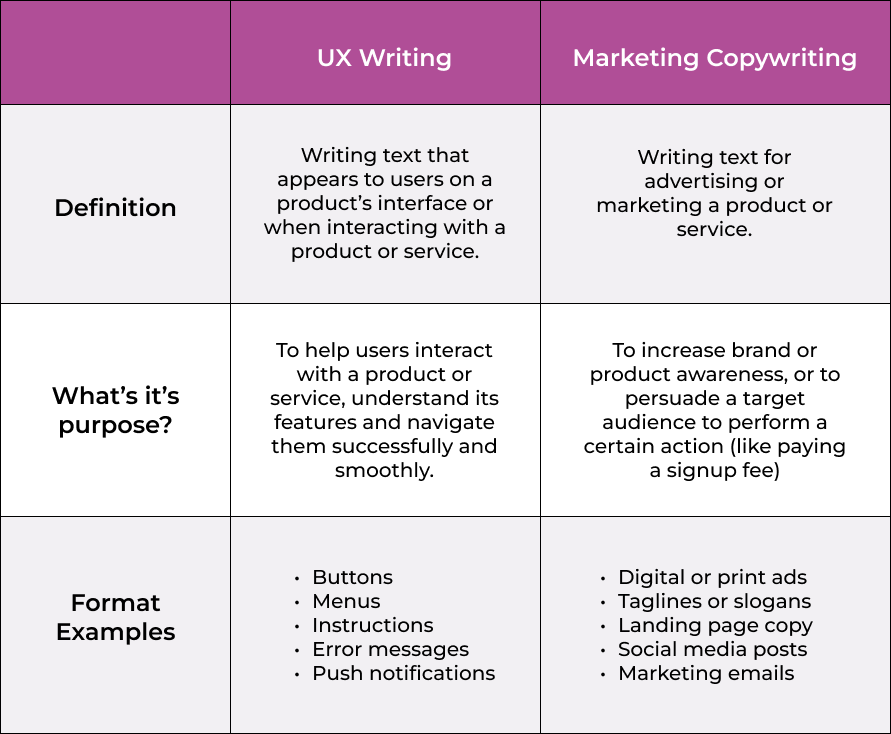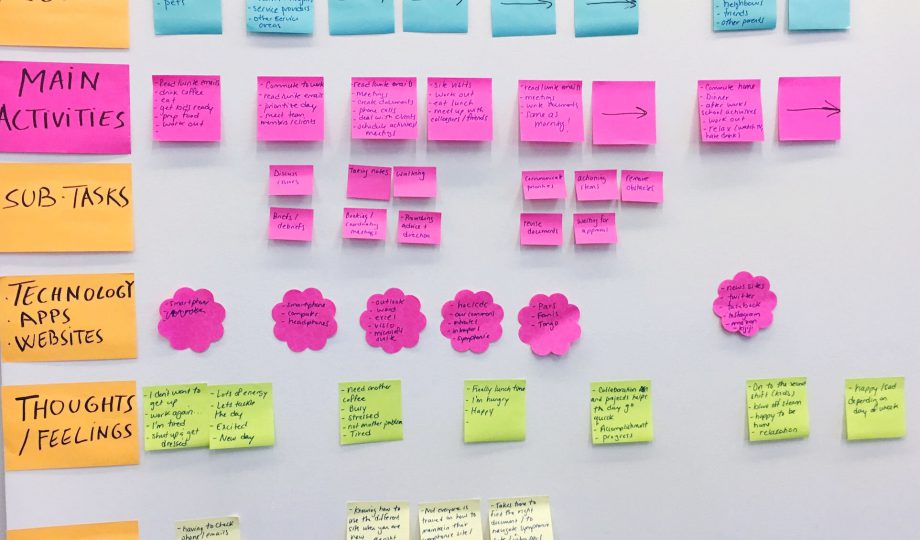By: Sara Fortier
Have you ever planned a vacation and built up an idea in your head of what that experience would be like, only to arrive on the day of your flight to encounter delays? And then maybe you got to your hotel and realized the view from your room didn’t match the pictures online, the room was smaller than you thought, and so on? As that dream vacation slowly lost its luster, you may have sworn off using a certain airline or hotel chain, even if you ended up having an amazing time.
Customers go through this every day, but it doesn’t necessarily mean that a product or service is terrible. The issue isn’t always the quality of the vacation, but instead, it might be the (sometimes unrealistic) expectations we develop ahead of the vacation.
UX and service designers can work and work to create an amazing vision for a product, but it can still be devalued if its users were anticipating something else. Thankfully, there are lots of ways to avoid this disappointment!
In today’s blog, we’ll talk about the expectations that customers have about products and services, how their expectations could be effecting your customer experience (CX) and what you can do to close the expectation gap!
What are Expectation Gaps in CX?
In the realm of customer experience (CX), customer dissatisfaction often comes from a discrepancy between what they expect and what they receive. Two common examples happen when:
- A customer expects a certain price and calls the contact centre only to realize that the quotes listed online were hugely underestimated.
- A customer expects a package to be delivered on a certain day, but it arrives later.
We call this problem the “expectation gap.”
It can breed distrust among your customers, and instead of winning more customers through word of mouth because of someone’s amazing experience, you might get the opposite: bad Google reviews, Reddit complaint forums or negative word-of-mouth feedback. This can lead to greater customer churn and loss of customer loyalty.
A 2022 survey conducted by PricewaterhouseCoopers asked 500 business executives and 2,500 customers in the US about customer trust. They found that:
- 87% of executives believed that consumers had high levels of trust in their business.
- 30% of consumers actually said that they had high levels of trust in those businesses.
These stats demonstrate how expectation gaps can go undetected and overconfidence can make us blind to our weak spots. If a business is flourishing but has a low level of customer trust, that success is likely going to be temporary — or at best, it’s bound to plateau early on.
In the next section, we’ll take a look at ways to find customer expectation gaps that your stakeholders could be ignoring, willfully or otherwise!
View this post on Instagram
Finding Expectation Gaps in Your Customer Service
The first step in offering an improved experience to your customers is understanding where these expectation gaps are originating and what opportunities for improvement this understanding could reveal.
We encourage you to grow through all of these steps, but you should also put extra emphasis on #3 — there’s no replacement for good design research!
1. Look for signs in your marketing metrics: The first place you might notice negative changes happening in your customer engagement might be in the numbers. Some key indicators might include:
-
-
- High customer churn.
- Cancelled orders or requests for cancellations.
- A high volume of customer support calls or tickets.
- Increased negative social media activity/comments and reviews (Especially trends within the reviews and comments).
- Fewer monthly/yearly renewals or fewer subscriptions after a free trial period.
- A low “Net Promoter Score” (A measure of how willing customers are to recommend your product or service.).
- Any other substandard metrics that are relevant to your product are service.
-
2. Follow word-of-mouth leads: You may have also heard of customer complaints through the grapevine. You should ask your team the following questions when they bring up customer issues so that you can determine where to probe:
-
-
- “How often are you hearing this complaint?” (Assess whether this is a one-off issue or something that is happening often.
- “Do we have any stats on how many complaints we received related to this?
- “At what point in their customer journey are they sending complaints?” (Pinpoint the timing of the issue for customers.
- “What are customers saying is the most frustrating part of the experience?”
-
3. Conduct thorough user research: This is the most important step! Leads are good jumping-off points, but nothing will ever beat talking to your customers and hearing their thoughts and feelings about a product or service. The best tools for identifying the biggest expectation gaps are creating customer journey maps, conducting 1:1 in-depth interviews with your customers and shadowing them as they interact with your digital products or your call support. If you’re pressed for time, a little research is way better than none.
4. Examine all possible causes: Next, ask your team to start looking at possible causes and solutions. Generally, the causes can be categorized in two situations:
-
-
- The customer’s expectations were higher than you wanted them.
- The customer’s expectations are within the scope of what you should reasonably be able to provide.
-
Or, if there is more than one cause, you might see a combination of both of these issues.
Look for reasons why expectations might be too high:
-
-
- Are there discrepancies in information across different pages in your website?
- Is crucial information provided too late in a process?
- Is there a lack of systems in place for responding quickly to complaints?
-
Examine cases where there’s room for improved performance:
-
-
- Can you replicate the issue and see where the misstep is happening to understand it better?
- Are you fully equipped (with tools, scripts, resources, etc.) to resolve these issues?
- If not, what would you need to provide a better experience?
-
Then, you’ll need to discuss these issues with stakeholders across related departments to determine what solutions are feasible. This process might feel daunting, but rest assured: close examination of your customer relationship management can only lead to better business processes and better retention in the long run!
4 Ways to Manage Expectations for Your Customers
Revamping your logistics chain or changing your online platform can be great long-term solutions for an expectation gap, but product and service transformations are often difficult and time-consuming to pull off. Meanwhile, you could start seeing customers dropping like flies at faster and faster rates.
And even if time is on your side, fate might not be: Sudden external factors can create new issues, like weather-related shipping delays, unprecedented line-ups and IT systems going down.
That’s why managing expectations is often the best solution for reducing expectation gaps. Below, we’ve listed our top four approaches for incorporating expectation management into your customer interactions:
1. Always be transparent with your customers: To build customer loyalty and trust, your salespeople, customer service team, website and marketing collateral should always communicate clearly and honestly up front, and never mislead customers. For example:
-
-
- If there are known issues with your product or missing features that will be coming soon but are yet to be released, you should include that information on your sales page. You can even spin it as an advantage: “Customers who join now will have a chance to impact feature design in the future.”
- If your service often has punctuality issues, provide (and clearly display!) a disclaimer on your website so that your customers can plan for delays.
- If a customer runs into any unknown errors, go out of your way to acknowledge the error and indicate what the company is doing to resolve it.
-
(Don’t forget: Every touch point with a customer is an opportunity to align, set, and manage that expectation gap and enhance your customer experience.)
2. Revisit and improve your UX writing: Another great method for managing customer expectations is the integration of more UX-friendly language into your online touchpoints. (Investing in both UX and CX can go a long way in winning over more customers!)
UX writing is a discipline that has existed in one form or another as long as we humans have a) used written language and b) provided each other with products and services. That being said, the concept of UX writing as an informed technical process is fairly new. Sometimes called “UX copywriting,” it can be confused with the art of marketing copywriting, because many writers learn and straddle both disciplines.
Differences between UX writing and marketing copywriting:
Good UX writing can help manage customer expectations if they’re incorporated into key customer moments like:
-
-
- Checkout experiences
- Shipping calculations
- Online quotes to explain that there may be delays
- Reasons why an online quote may not be 100% accurate
- Instructions for filling out a form properly
-
Since websites and apps are typically the first point of contact for your customers, setting expectations using clear, concise and intuitive UX language and conducting usability testing are critical moves for starting off customer/provider relationships on a positive note.
(Note: Your organization will be more open to developing better UX writing if they rank higher on the UX Maturity Scale. Check out our free guide below to learn more about becoming UX-mature!)
3. Create better customer service scripts. You should absolutely empower your customer service agents and front-line staff with better scripts and protocols. It’s no secret how important customer support and call centres are to creating a successful customer experience — frustration and wait times are major complaints across countless businesses.
Two key strategies you should apply to updating these scripts are:
a. Covering all known and common issues.
When your customer service agents have good scripts for common questions, customer issues, or known problems, they’ll be much better prepared to ease worries and maintain a positive experience.
When those scripts are missing or inadequate, customer distrust can develop. Customers won’t believe in the person helping them, and they’ll start to doubt the company’s ability to take care of them and resolve their issues. In turn, this can also lead to high employee turnover and hiring challenges.
b. Anticipating potential confusion. Most of the time, a call centre is the second point of contact for customers. For example, a customer who saw a list of quotes on a website might call in with questions before investing in a big order.
Now, if that website told them one thing and the call centre agent tells them another —maybe the final quote for that big order is higher than the quotes they saw online — a mismatch of expectations will form. That mismatch will be especially frustrating to a customer if they’ve already gone on a 20-minute journey of asking different logistical questions.
This kind of issue can crop up with many different aspects of a customer experience, like longer timeframes for services provided, mix-ups with items received, limited access for lower membership levels, etc. BUT, if your call centre agents are prepared with good scripts that instruct them to expectations up-front, they’ll have the opportunity to quickly reset the customer’s expectations and avoid potential upset.
c. Warning customers about potential changes. Be conscientious about sending out notices to warn customers of delays or changes in an experience ahead of time. When things do go wrong (as they often do) your best bet is to get ahead of it!
You should:
-
-
-
- Explain the “why.” This is your chance to justify a change in service and uphold your reputation for great customer care. If you learn that there are shipping delays during the holiday season, email your customers with a kind and apologetic message to let them know you are doing everything possible to get their package delivered on time. This saves them having to call customer support and it will build trust!
- Express your appreciation. If there were significant delays or complications, make sure to follow up with a note thanking the customer for their patience. Bonus points if you include a small gift in the mail or a discount/freebie via email. (Incentives are not just for diary studies!) This might cost you in the short term, but in the long term, your customers will stay loyal and tell their friends how great your business is.
-
-
Many businesses have stories about nightmarish Yelp reviews that they burned time and money to resolve as quickly as possible, before word could spread. Or their employees might talk about that one time a customer made a scene in-store after being denied a return. While these moments can be embarrassing, their impact is reversible. All it takes is some careful examination of the customer expectation gap and a well-thought-out course of action to reduce or remove that gap.
Identifying an expectation gap is also empowering — it can lead to pivotal brainstorming sessions and big learning moments that UXers and service designers can use to their advantage. We hope that today’s blog will help you get to the bottom of those less-than-ideal customer interactions or lower-than-normal metrics, and ultimately provide better experiences that improve people’s lives!








